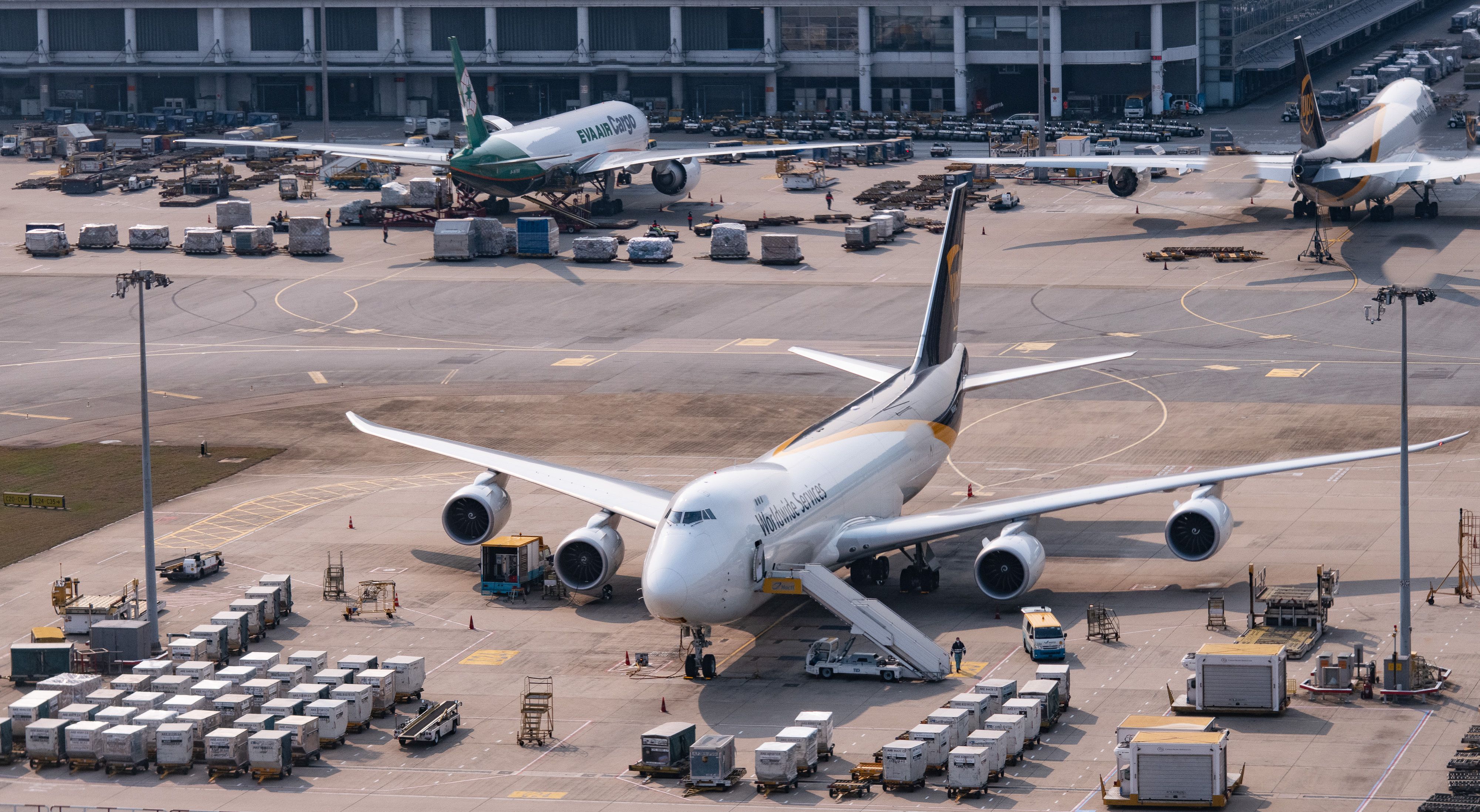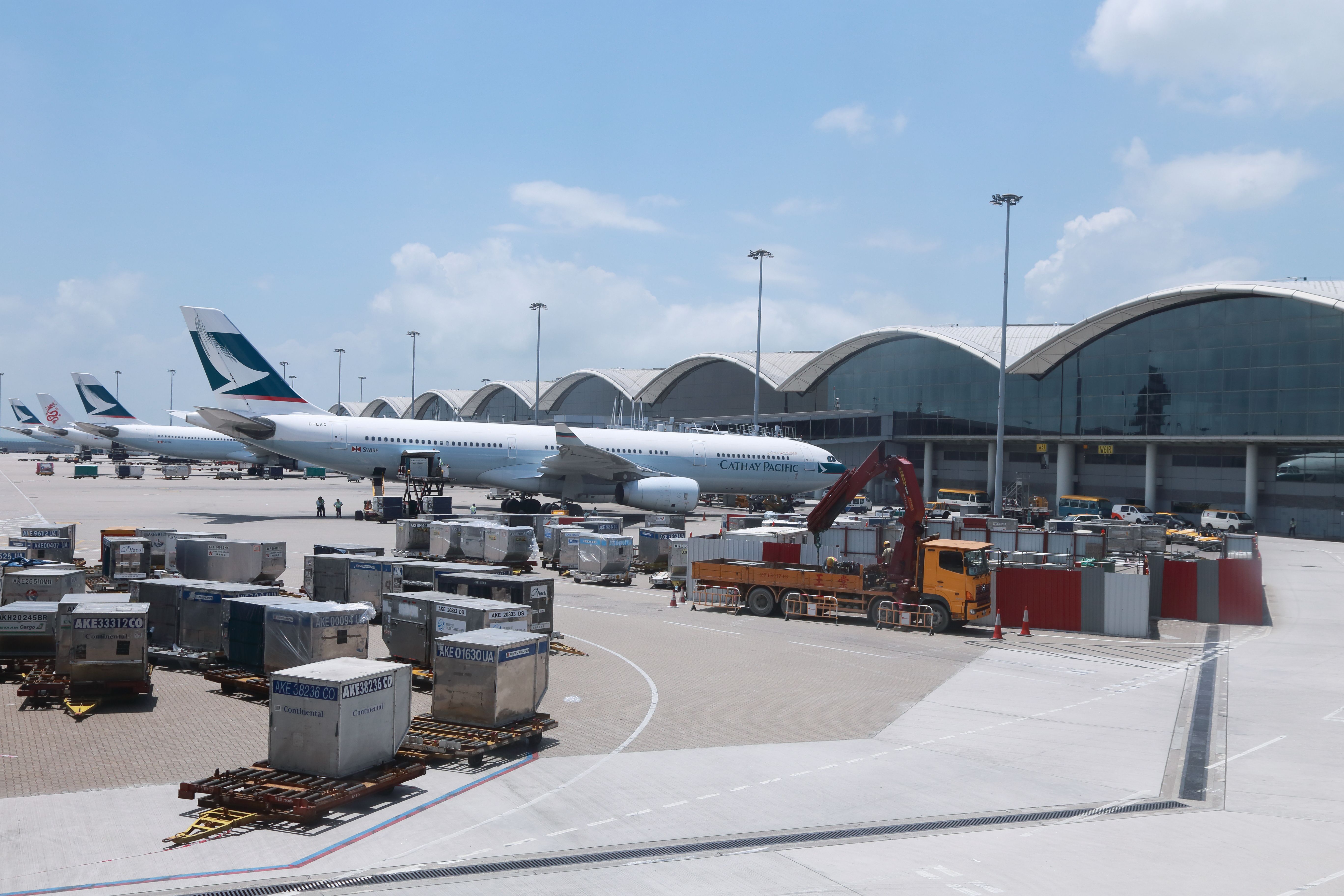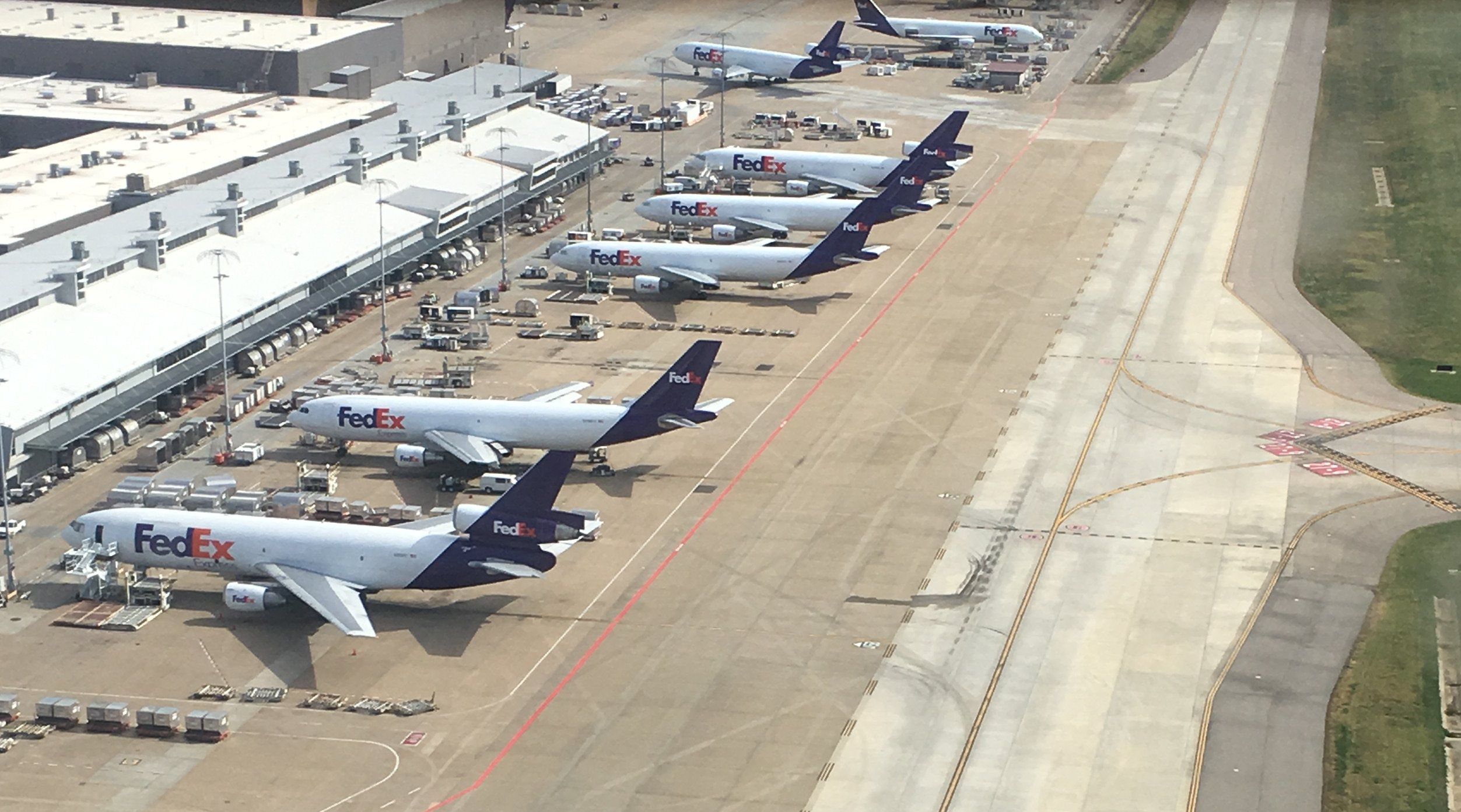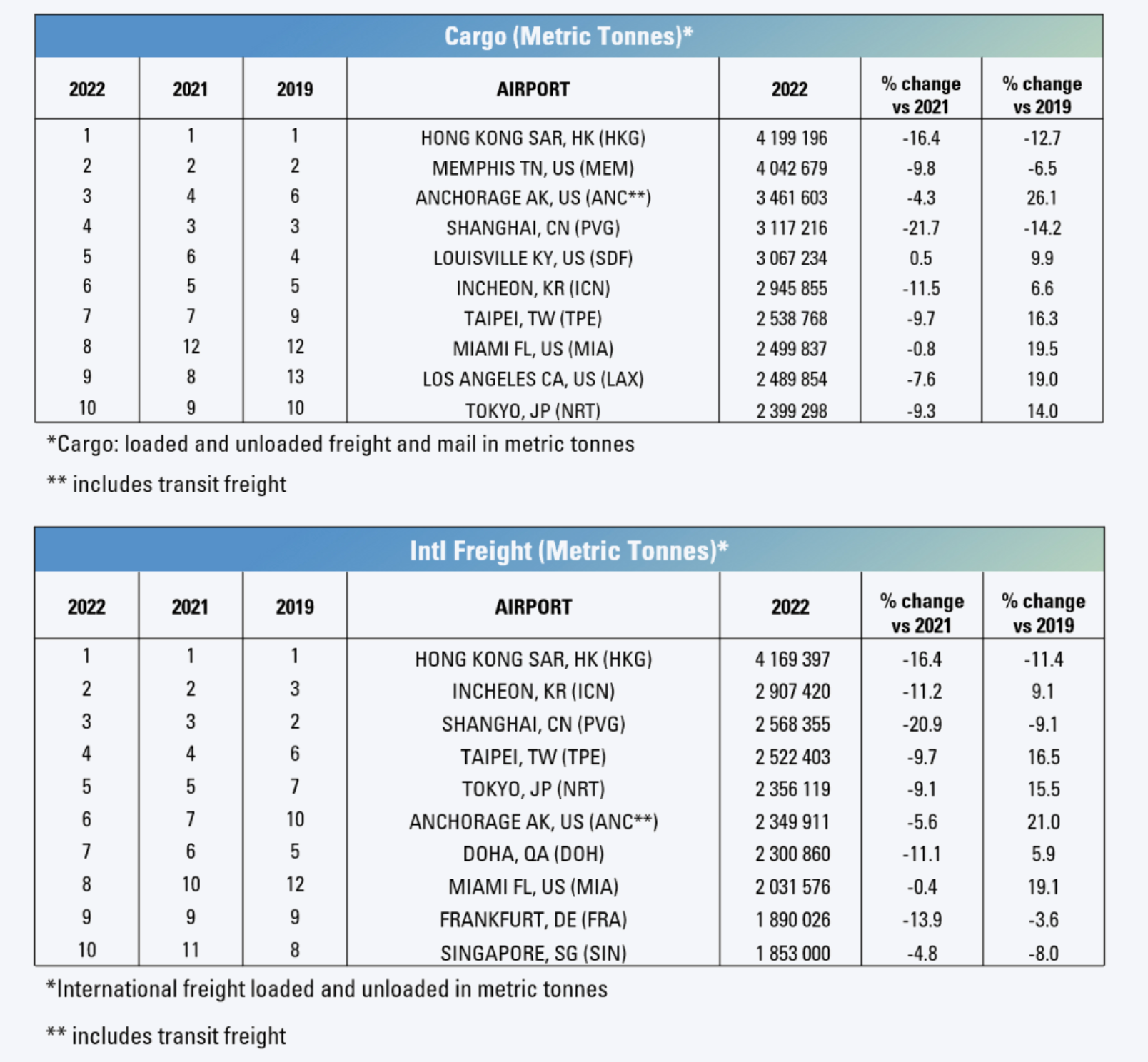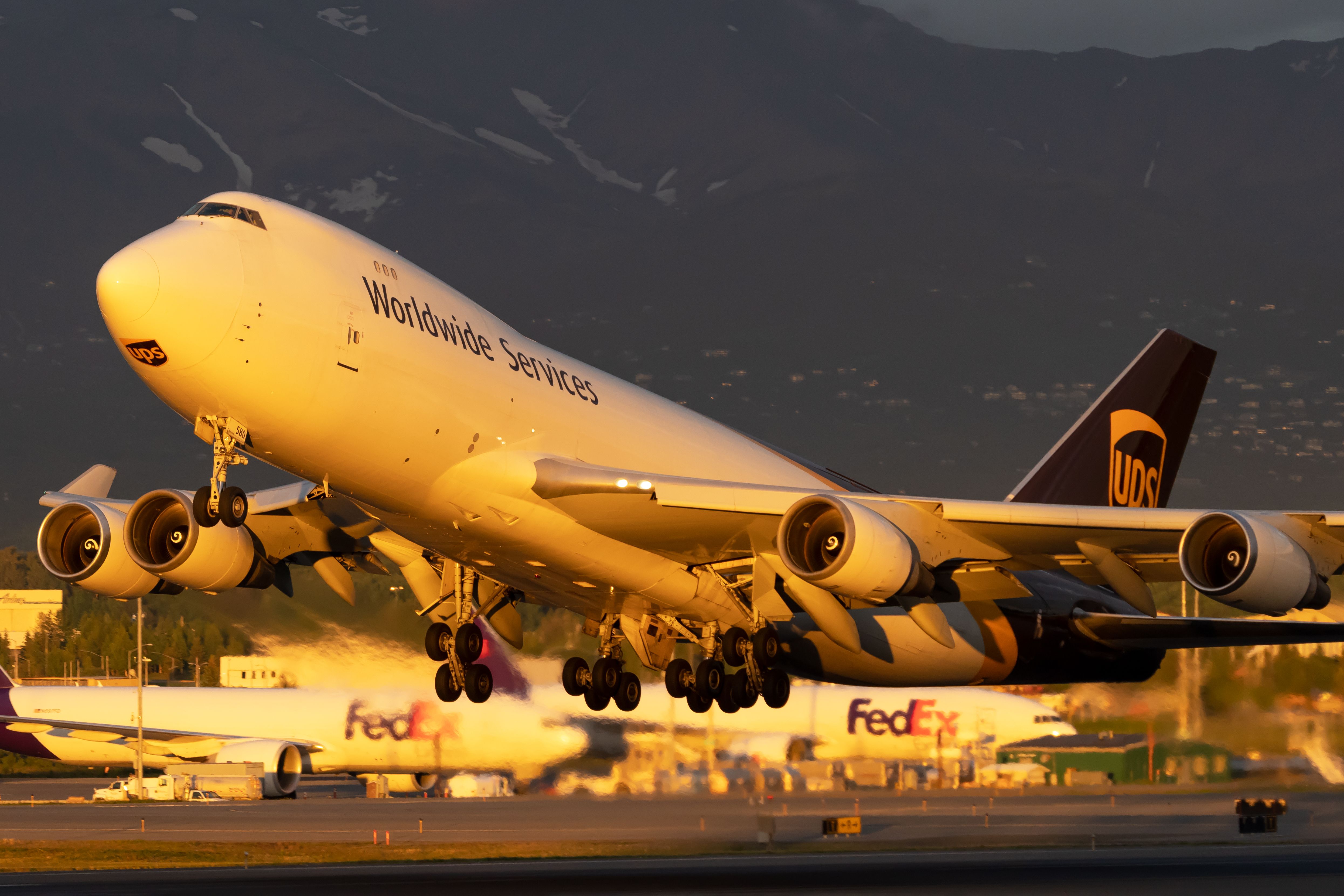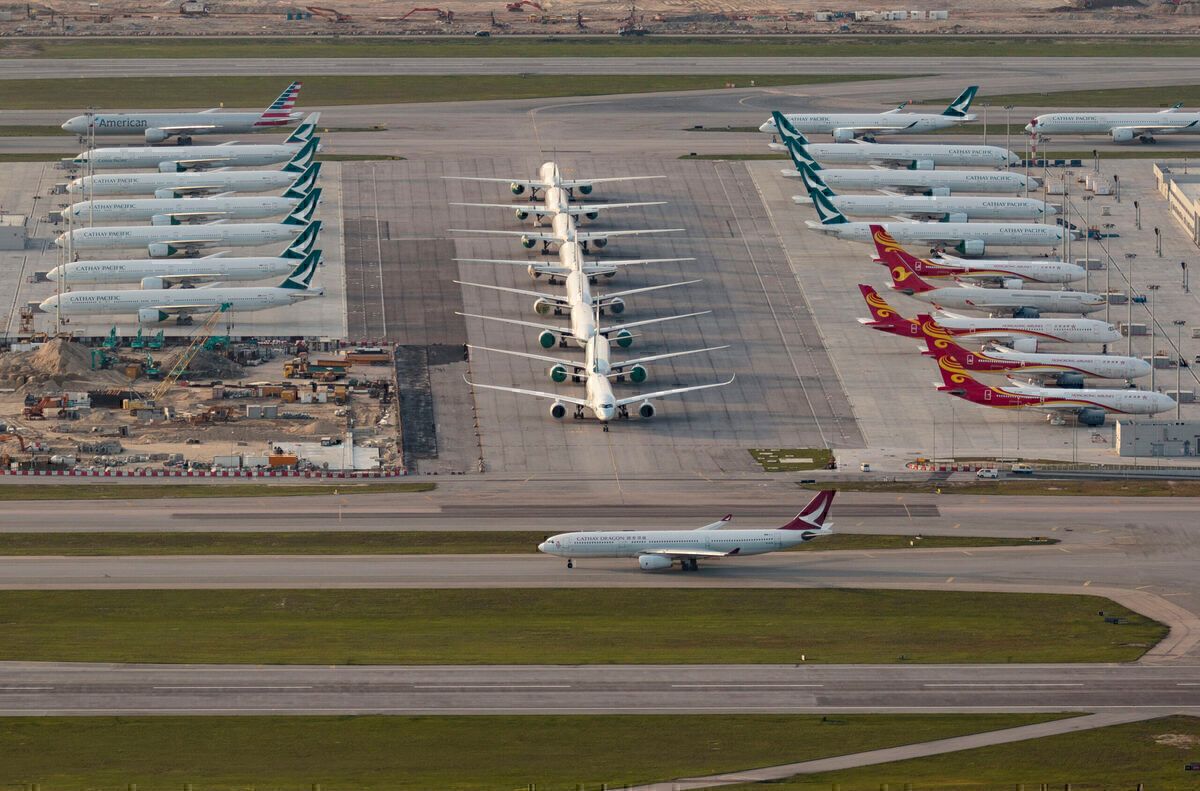Airports Council International (ACI) has shared the busiest airports by passenger volume and also the busiest airport by air freight. While most airports remained consistent in 2022 in their rankings, global air cargo traffic volume has decreased.
Hong Kong International is the world’s top air cargo hub
Unsurprisingly, Hong Kong International Airport is the world’s busiest air cargo hub. It is well known to be a key Asian air cargo hub with worldwide direct flights. But with 4,199,196 metric tonnes of freight, it is barely ahead of Memphis International Airport’s 4,042,679 metric tonnes.
Get all the latest aviation news right here on Simple Flying
Hong Kong International Airport has three cargo terminals that offer approximately 5,000 square meters of dedicated cold room storage. Clearly, when the world needed COVID-19 vaccines requiring temperature control, Hong Kong International Airport was an ideal airport.
Even with British Airways restrictions on air passenger travel to Hong Kong only restarting in December 2022, daily air freight flights were still linking Hong Kong International Airport with London’s Heathrow International Airport.
Of course, with Federal Express’s (FedEx’s) home plate being Memphis International Airport as pictured above, it’s no surprise that Memphis International Airport is second on the top ten list. The airport had 146,330 domestic and international aircraft operations for 2022. FedEx was born with a mission to create an organization that could ship packages from point to point, so many of FedEx’s packages go through the Memphis hub.
Relationships and location key to air cargo volume
In third place was Anchorage International Airport in Alaska. Anchorage is less than ten hours flight time from 95% of the industrial world, and along the great circle route linking Asia with North America. It handled over 3.4 metric tonnes of air freight in 2022. The airport director Craig Campbell said,
“ANC is committed to continue serving as one the busiest cargo airports in the world through maintaining positive relationships with our partnering stakeholders around our airport. Responsible growth and development are occurring to allow ANC to keep up with the demands of the aviation industry. We are an important part of the world’s economy, as the designation of third busiest signifies.”
Anchorage International Airport even won the 2022 Best Airport in North America from Asian Freight, Logistics and Supply Chain. Campbell in response, said;
“Our international customers recognize not just our prime location, 9.5 hours away from 90% of the industrial world, they appreciate the services ANC provides—from our ever-open runways to the cleanliness of our facilities. We also recognize that our business partners, such as the capable ground handlers and fuel operators, make sure that all the carriers can stay punctual with their busy schedules. This award acknowledges each company and individual that works to keep ANC open for business year-round.”
Alaska Governor Mike Dunleavy added his praise, commenting,
"Anchorage International Airport is a spark in Alaska’s economic engine. It’s a world class passenger and cargo airport, uniquely positioned in the world, and welcoming to all that come through its gates.”
Why the global decrease in air freight?
One should note again that there has been a global decrease in air freight. ACI suspects that the decrease in air freight traffic is due to “the ongoing geopolitical tensions and disruptions to global trade and supply chains,” such as Russia’s War on Ukraine. But another global aviation organization – International Air Transport Association (IATA) – partially blamed the decrease on inflation also.
In a February statement, IATA Director General Willie Walsh said,
“In the face of significant political and economic uncertainties, air cargo performance declined compared to the extraordinary levels of 2021. That brought air cargo demand to 1.6% below 2019 (pre-pandemic) levels. The continuing measures by key governments to fight inflation by cooling economies are expected to result in a further decline in cargo volumes in 2023 to -5.6% compared to 2019.”
Nonetheless, the world’s need for everything from animals to computer peripherals, flowers, food, toys, and zany collectibles requires a strong air cargo network. In recent months, new routes like Qatar Airways Cargo’s Bogata-Dallas Ft. Worth and also Silk Way West Airlines’ new route, which connects Azerbaijan's Heydar Aliyev International Airport (GYD) with Houston's George Bush Intercontinental Airport (IAH), have sprung up. So not all is gloomy in the air cargo world.
Bottom line
As IATA begins a World Cargo Symposium called “Age of Change: Moving Air Cargo Forward,” hopefully, participants will remember that strong logistics, relationships, and global demand keep air cargo on the move and back on the rebound. New routes will continue to spring up as the world becomes more interconnected.
Get the latest aviation news straight to your inbox: Sign up for our newsletters today.
How much do you depend on air cargo? Please share in the comments.
Source: Hong Kong International Airport, ACI

